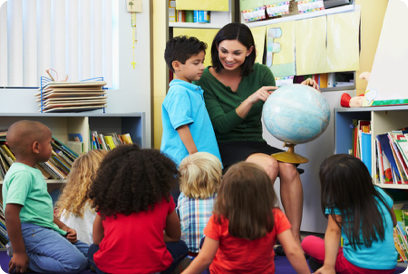
Geography & Cultural Studies
Our Geography and Cultural Studies curriculum aims to feed the child's natural curiosity about the world around them and is closely tied to our Science curriculum.
Our Geography and Cultural Studies curriculum has two components: physical and cultural. Physical geography introduces the child to the physical properties of the Earth. Cultural geography is the study of society and culture.
Physical Geography:
Our students use globes and puzzle maps to learn the continents, the countries in each continent, and the states of the United States. At first, the child's interest in these materials is simply as a puzzle to put together. In time, they learn the names of the continents, the names of many countries, and the names of each state.
Our teachers also use Montessori materials specifically designed to teach young children basic land and water formations, such as island, isthmus, peninsula, lake, and bay. Three-dimensional models of each, complete with water, are presented to the children. Later, the children learn to recognize these formations on maps.
Cultural Geography:
Children begin to discover the larger cultural world around them by first learning about the family traditions and cultures within their classes. Then they extend their awareness by exploring other countries, their customs, music, food, climate, traditional dress, art, and language. This helps raise their consciousness about other people and fosters understanding, tolerance, and compassion for all the people in the world.
Curriculum Quick Links:
